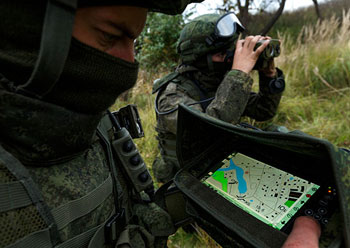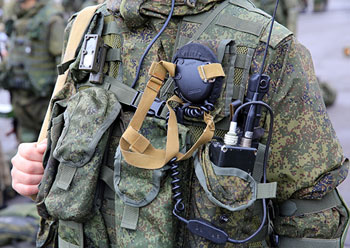INDIAN ARMED FORCES CHIEFS ON OUR RELENTLESS AND FOCUSED PUBLISHING EFFORTS

The insightful articles, inspiring narrations and analytical perspectives presented by the Editorial Team, establish an alluring connect with the reader. My compliments and best wishes to SP Guide Publications.

"Over the past 60 years, the growth of SP Guide Publications has mirrored the rising stature of Indian Navy. Its well-researched and informative magazines on Defence and Aerospace sector have served to shape an educated opinion of our military personnel, policy makers and the public alike. I wish SP's Publication team continued success, fair winds and following seas in all future endeavour!"

Since, its inception in 1964, SP Guide Publications has consistently demonstrated commitment to high-quality journalism in the aerospace and defence sectors, earning a well-deserved reputation as Asia's largest media house in this domain. I wish SP Guide Publications continued success in its pursuit of excellence.
- Operation Sindoor: Resolute yet Restrained
- India’s Operation Sindoor Sends a Clear Message to Terror and the World – ‘ZERO TOLERANCE’
- Japan and India set forth a defence cooperation consultancy framework, talks on tank and jet engines
- Terrorist Attack in Pahalgam in Kashmir: Unfolding a long surgical war against PAK
- Lt General Pratik Sharma takes over Command of Indian Army's Northern Command
Advances in Exoskeleton Army Gear
 |
The Author is Former Director General of Information Systems and A Special Forces Veteran, Indian Army |

News reports of September 2019 stated that the Defence Bioengineering and Electro-medical Laboratory (DEBEL) of the Defence Research and Development Organisation (DRDO) has been collating data for Simulation and Analysis of Musco-skeletal parts, like lower limb simulation (while the soldier is standing), etc. The private sector companies too are doing R&D for Exoskeleton design for the Indian soldier, which will be customised according to the different environmental challenges. Globally, countries like the US and Russia are looking at Exoskeleton Technology for their soldiers as this help soldiers wear over their uniform which is battery operated.
For 21st century soldiers, being networked for C4I capabilities is critical. Items like advanced helmets, radios, nigh vision goggles and body armour add to the weight of the soldier that fatigues him. Exoskeletons are gadgets worn as a harness by a soldier to augment his strength. These body gadgets are fitted with powered special devices and Artificial Intelligence (AI) to enhance the capability of a soldier. A soldier rigged with an Exo-Suit is capable of faster movements and possesses the extra load-bearing capability. Exoskeleton limb actuator devices and sensors design is based on study and analysis of human Musco-skeletal impact, measured during the soldier's interaction with the external environment. Each of the muscle's micro-motion is measured for its correlated moment on the joints, so that a similar smooth response from the Exoskeleton can be obtained, according to an AI and C4I expert. Exoskeletons have composite material structure with sensors and controllers interlinked in a feedback control loop via an intelligent processor.

For military applications, Exoskeleton rigged up on a soldier is expected to enhance the soldier's additional load carrying capacity by 100 kg for a minimum of eight hours of operational time and three to five hours of battery backup. Additionally, Exoskeletons are dual-use technology with high relevance in the medical field, where these are referred to as Robotic Exoskeleton. This allows paraplegics to walk again and is the rehabilitation tool for people with serious injuries, like a spinal cord injury. Such suits improve metabolic and cardiovascular functions in patients so as to overcome multiple medical issues like respiratory problems and osteoporosis, majorly caused due to non-functioning body condition. They also assist paralyzed patients with sports injuries to walk, move and provide them with the much needed emotional support for overcoming depression. Even in the military domain, these medical benefits of Exoskeleton can help soldiers with severe disabilities to live a close to normal life.
Indian troops are deployed in extreme terrains like on Siachen glacier and cold/hot desert regions to a high humidity place like North East region where environmental specifications of Exoskeletons are demanding. For example, equipment storage temperature parameter shall range from approximately minus 50 degrees to plus 70 degrees Celsius. It is also opined that in order to deny use of captured Exoskeleton by adversaries, a high grade ‘lock’ pass code mechanism shall be required.
In 2012, British firm 'Intelligent Textiles' developed conducive yarn that took power and data to where required, with redundancy, so that if the fabric got cut, damaged or torn, there is still a way of re-routing the data. During field trials, the fabric was integrated into the vest, the shirt, the helmet, the backpack, and into the glove and weapons platform. The ring-main circuit allowed powering data where required. Power could be sent to even the helmet without it being tethered. Also being developed was a 'fabric keyboard' for use with a portable computer integrated with the uniform. By September 2015, the firm secured a multimillion-pound deal with the US and UK to bring this technology to soldiers.

Recent reports indicate Russian combat gear ‘Sotnik’ will replace existing ‘Ratnik’ armour worn by Russian soldiers. ‘Ratnik’ had received a gear upgrade in 2017 including a wristwatch capable of withstanding nuclear blasts. ‘Russia will integrate ability to control small size attack drone swarms, robots, and exoskeletons into its next-generation ‘Sotnik’ soldier gear. ‘Sotnik’ will enhance situational awareness of each soldier, improve combat performance and efficiency, and reduce risk to life on the battlefield. Research on ‘Sotnik’ may continue over 2-3 years but incorporation of combat and support robots as well as reconnaissance and attack drones of small and mini-class linked to the tactical level automated command system signals big boost soldier’s capability. ‘Sotnik’ will be 20 per cent lighter than 'Ratnik' gear. Images from the micro-drones' cameras will also be projected straight to the soldier's helmet visor or protective glasses, alongside commands and maps of the terrain. It is also expected that the ‘Sotnik’ combat gear will consist of landmine-proof boots, a special thermal suit that makes the soldier invisible to infrared sensors, and an antiradar suit. The material planned to be used for ‘Sotnik’ is chromogenic electroactive, which enables the combat gear to change color to blend in with the mission location's terrain.
The fact that we have been importing special clothing for high altitude and glaciated areas for our troops indicates that the government owned defence industry has not been able to meet the requirements. DRDO wasn't even able to provide the Army with a proper bullet proof-jacket over past seven decades plus till Dr Shantanu Bhowmik, Head Research & Projects, Department of Aerospace Engineering, Amrita University, Coimbatore forwarded a proposal to MoD for a state-of-the-art bullet resistant vest, which was eventually approved. India has to go beyond DEBEL collating data on Exoskeletons by involving the private sector in a big way - going for ‘Make in India’ by private sector in collaboration with foreign vendor given that indigenous private companies have also been researching this aspect.





